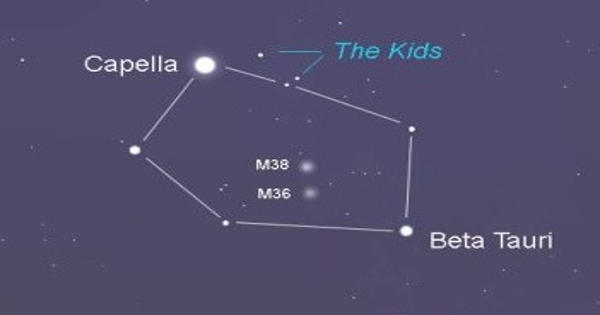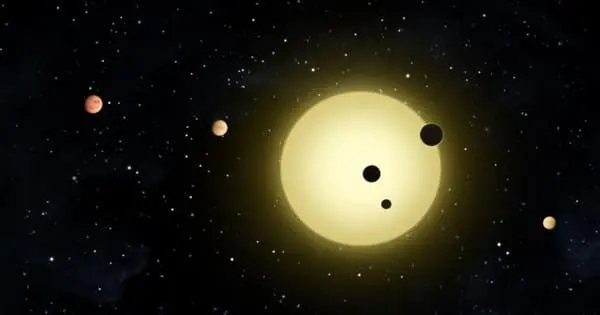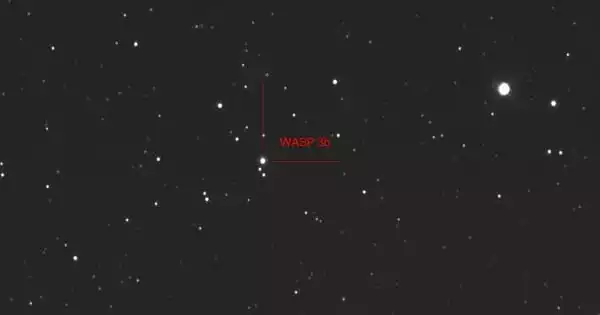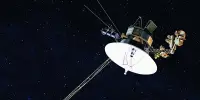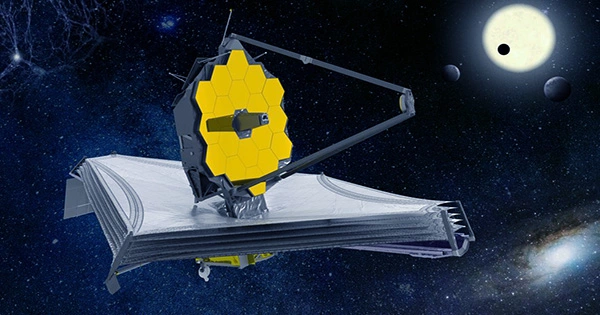Capella is a bright star in the constellation Auriga. It is also known as, α Aurigae, α Aur, Alpha Aurigae, is the brightest star in the constellation Auriga, the eleventh brightest star in the night sky, and the third brightest star in the northern celestial hemisphere, after Arcturus and Vega. Its name meaning “little goat” in Latin, Capella depicted the goat Amalthea that suckled Zeus in classical mythology.
Capella is a binary star system 46 light-years away in the constellation Auriga. Each member is 25 times larger than the Sun.
Capella was the brightest star in the night sky from 210,000 years ago to 160,000 years ago, at about −1.8 in apparent magnitude. Although it appears to be a single star to the naked eye, it is actually a star system of four stars in two binary pairs. The first pair consists of two bright, large type-G giant stars, both with a radius about 10 times the Sun’s, in close orbit around each other. Sometimes known as the “Goat Star”, Capella’s yellow-orange appearance at times makes it hard to distinguish the star from the planet Mars. These two stars are thought to be cooling and expanding on their way to becoming red giants. It’s visible for most of the year in the Northern Hemisphere. Plus, it is northernmost in the huge asterism, or star pattern, known as the Winter Hexagon.
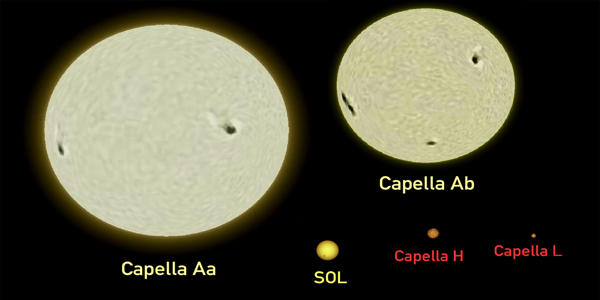
- Apparent magnitude: 0.08
- Distance from Earth: 42.8 light-years
- Composite type: G3III
- Color: Yellow
- Mass of primary: ~2.7 M☉
- Radius of primary: ~12.2 R☉
- Constellation: Auriga
- Right ascension: 05h 16m 41s
- Declination: +45° 59′ 52”
Capella is the brightest star in a five-sided pentagonal shape that makes up the constellation Auriga. The second pair, around 10,000 astronomical units from the first, consists of two faint, small, and relatively cool red dwarfs. The primary members are two yellow giant stars, designated Capella Aa and Ab. It is a prominent object in the northern winter sky; it is circumpolar to observers north of 44°N. They orbit about a common center of gravity, separated by only about 0.72 astronomical units, where an a.u. is the distance from Earth to the Sun.
The Capella system is relatively close, at only 42.2 light-years (12.9 pc) from Earth. The shape is difficult to reconcile with the idea of a man driving a chariot, but it’s a noticeable pattern and easy to find. It is relatively close, at 42.9 light-years (13.2 pc) from the Sun.
The system is a member of the Hyades moving group, a group of stars moving in the same direction as the Hyades cluster. Capella marks one corner of the constellation Auriga, which makes an easily recognizable hexagon. It is one of the brightest X-ray sources in the sky, thought to come primarily from the corona of Capella Aa. It has been identified as a source of X-rays, likely because of the strength of its corona or surrounding gas envelope.
Information Source:
